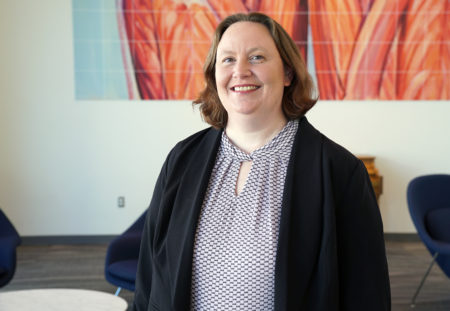 Dr. Jennifer Hotzman serves as Associate Professor of Anatomy at the Idaho College of Osteopathic Medicine.
Dr. Jennifer Hotzman serves as Associate Professor of Anatomy at the Idaho College of Osteopathic Medicine.
Dr. Hotzman earned her bachelor’s degree in Anthropology from the University of Southern Mississippi and completed her Masters and Doctorate degrees in Anthropology at the University of Florida.
After graduation, Dr. Hotzman joined a small company called Anthrotech which specializes in anthropometric surveys. Once she realized how much she missed teaching, she obtained a postdoctoral position at Duke University where her main duties were teaching gross anatomy to medical students and residents. After her postdoctoral position she joined the faculty at William Carey University College of Osteopathic Medicine where she taught for 6 years.
Dr. Hotzman’s primary area of research specialization is craniofacial mechanics. She has investigated the influence of dietary consistency on palatal morphology including the morphology of the palatal sutures particularly in macaques, colobines, papionins, and hominoids. She has collected strain gage data from the palate in an effort to determine how this structure is loaded during incision and mastication in an effort to develop a better method of modeling this structure for comparative purposes. She has employed methods such as micro-computed tomography and microindentation techniques to determine the material properties of the macaque bony palate.
Ultimately Dr. Hotzman’s research interests involve how bone and cranial sutures respond to mechanical forces. She has recently expanded her research interests to include biomechanics of long bones. She is currently working on a research project that involves using cross sectional geometry of long bones on juvenile remains from a Colonial Maya site to determine if they were developing along their expected trajectory.
Q: What inspired you to pursue a career in anatomy?
A: When I started college, I was interested in environmental biology. My first semester though I took an introductory course to anthropology and I was hooked. I changed my major the following semester and then went on to earn my PhD in anthropology. Much of my graduate training at the University of Florida involved learning anatomy and I become fascinated with the amount of variability that exists among individuals. I started teaching anatomy and physiology throughout my years of graduate school which only encouraged my interest in anatomy.
Q: How did you transition into academia, and what inspired you to work at ICOM?
A: Immediately after I defended my dissertation, I moved to Ohio where I started a job as a project manager for a company that specializes in anthropometric surveys. After working in this position for a couple of years, I realized that I really missed teaching. I left the project manager position for a post-doctorate position at Duke University that focused on teaching gross anatomy to medical students. From there, I became a faculty member in Southern Mississippi at a medical school for almost 7 years. After getting married and having a child, my husband and I made the difficult to decision to leave Mississippi and continue our adventure together in Idaho. When I visited ICOM during my interview, I fell in love with the people here and the area. The mission of the school is also important because there are so many rural areas and underserved populations that need access to physicians and healthcare services. I feel privileged to be a part of the journey to creating physicians that will serve these populations.
Q: What is a memorable research project you’ve worked on?
A: The most memorable research project I have worked on involved performing biomechanical experiments using pig skulls and macaque skulls. The experiments were designed to simulate the forces that the skulls would experience during biting and chewing. Strain gages were placed at specific sites on the skulls to determine how much force was being transmitted through the skulls during these activities. The question these experiments sought to address is how bone responds to mechanical forces.
Q: What is the best part of your job?
A: The best part of my job is working with the other anatomists and faculty here and interacting with the students in the anatomy lab.
Q: What advice do you have for ICOM’s student doctors as they prepare to become physicians?
A: Medical school is undoubtedly stressful, but it is important to utilize the resources available to you, which include the faculty and staff at ICOM, when you need help. You need to be proactive in reaching out to receive the assistance you need. The goal of everyone here is to see you succeed in becoming a competent physician!